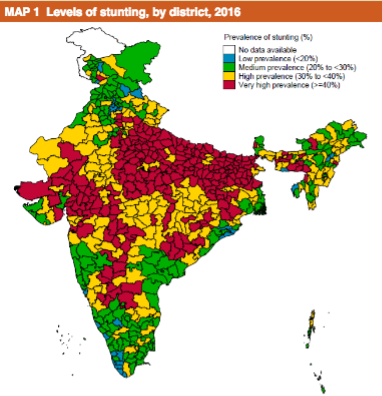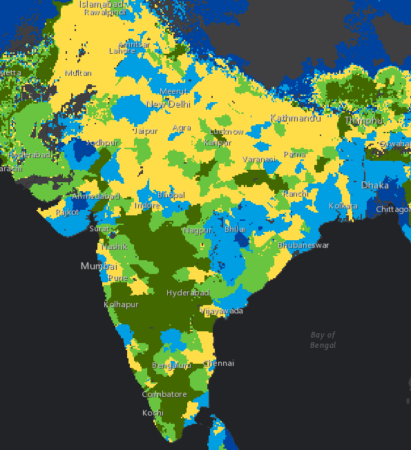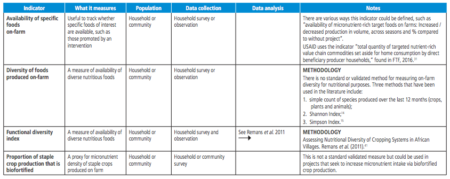- Tritodendrum hits the market.
- DS Athwal would have approved. RIP.
- Medieval bakers too, I bet.
- Want some cherry tomatoes on your bread? No? Try these then.
- Lots of crop wild relatives among newly discovered plants. See (some of) them on the new State of the World’s Plants report from Kew. And no, Kew, none of them are “miserable.”
- Early farmers unintentionally produced vegetables with larger seeds simply by cultivating them. And cereals too.
- Head of IUCN Red Data List Unit in impassioned plea for IUCN Red Data List process.
- What is taro good for? I’m glad you asked.
- I missed International Hummus Day? How could this happen?
- Textilia Linnaeana! What do you mean I’ve just had my birthday?
- Lowering the glycemic index of rice for the Chinese market.
- Fighting for avocados. Literally.
Indian nutrition and crop diversity link ready to be explored
Is there a relationship between levels of stunting in Indian districts…

…and crop diversity in their farming systems (blue low, green high)?

I have no idea. But I think we should be told.
Genetic erosion: it’s complicated
From the CIAT blog:
Putting true numbers on diversity loss turns out to be a complicated and contested business, with no shortage of strong opinions. One big part of the problem is that there aren’t many good ways to count the diversity that existed before it disappeared. Researchers have done some work to assess the changes in diversity in crop varieties of Green Revolution cereals, and to some degree on the genetic diversity within those varieties. The results indicate that, although diversity on farms decreased when farmers first replaced traditional varieties with modern types, the more recent trends are not so simple to decipher.
My work here is done.
Nutrition toolkit all set to make agriculture oh so sensitive
FAO’s Toolkit on Nutrition-sensitive Agriculture and Food Systems is out. Without a huge amount of fanfare, as far as I can tell, which is a bit surprising. Anyway, good to see agrobiodiversity properly highlighted in multiple places, including as an entry point for various interventions, and as part of several indicators.
Meanwhile, that call for best practices for healthy food systems (which means nutrition-sensitive, among other things), is still open.
Nibbles: Rice in Trinidad, Sweet potatoes in Ethiopia, EU crop diversity double, Sir Peter on the ginkgo, Forages, Brazilian peanuts, Seed moisture, Phenotyping double, Svalbard deposit, CATIE data, Herbarium double, Seed #resistance, Father of the apple, Agave congress
- African rice out of Africa, and out of the genebank.
- The other way around for sweet potato.
- Markers for micronutrients. And diversity for taste…
- The deep history of the ginkgo.
- Study plants to decrease the effects of burping.
- Brazil rationalizes peanut collections.
- Measuring moisture in seeds.
- Big data for better seeds. And not only in Iowa.
- NZ seeds in Svalbard.
- CATIE on Genesys.
- Oz biosecurity fail. Better stick to online.
- I want to be a seed rebel too.
- Maybe in Kazakhstan?
- Agave under the volcano under the cosh.
